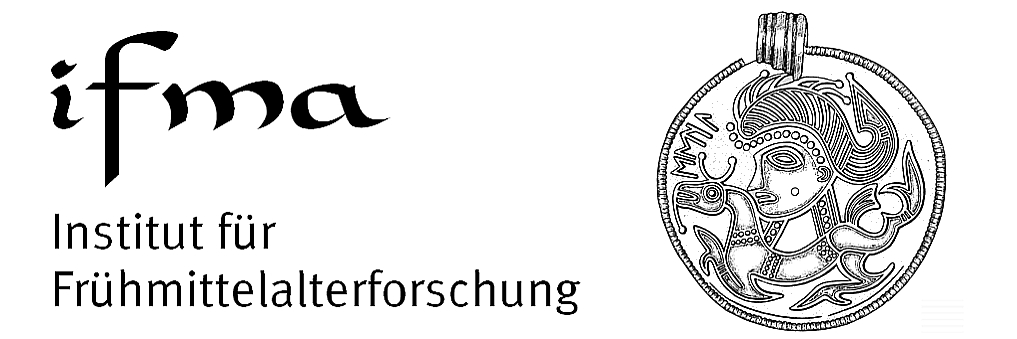
TMR 01.01.01
Iotsald von Saint-Claude, Vita des Abtes Odilo von Cluny, edited by Johannes Staub. MGH, Scriptores rerum germanicarum in usum scholarum separatim editi, 68. Hannover: Monumenta Germaniae Historica, 1999. Pp. viii, 366. DEM 78. ISBN 3-7752-5389-0.
Johannes Staub. Studien zu Iotsalds Vita des Abtes Odilo von Cluny. MGH, Studien und Texte, 24. Hannover: Monumenta Germaniae Historica, 1999. Pp. xiii, 98. DEM 30. ISBN 3-7752-5724-1.
Reviewed by Dominique Iogna-Prat, CNRS, Auxerre/Dijon, dip@wanadoo.fr.

hese two publications by Johannes Staub must be read together, for they constitute the result of the same project, presented as a dissertation at Heidelberg in 1997, whose original unity the publishers should have maintained. With the exception of Peter the Venerable, Cluniac authors have hardly been the object of critical editions and studies. If abbatial hagiography has seen a significant renewal for about the last fifteen years, the reference texts are most often cited in old editions of mediocre quality, so it was a good idea of Johannes Staub to attack the hagiographic dossier of Odilo, in which the principal pieces were composed by Jotsald of Saint-Claude.
The first contribution of the research carried out by this young philologist (a student of Walter Berschin) is to illuminate the biography of Jotsald (Iotsaldus), heretofore considered a simple monk of Cluny. Born around 975, Jotsald entered Cluny at an unknown date (between 991 and 993, as Johannes Staub suggests, or around 1015 as Dom Jacques Hourlier thought). A close disciple of Odilo (994-1049), he also appears occasionally in the entourage of Hugh of Semur (1049- 1109). Besides hagiographical texts concerning Odilo, Jotsald wrote two lost works mentioned in the monastery's library catalogue (now dated to the abbacy of Hugh of Semur, thanks to Veronica von Buren): the Dicta Berengarium hereticum and a Laus de sanctis patribus . As was the custom in early Cluny, the writer was also active in the chancery as a copyist or vice-chancellor. There is no trace of Jotsald in the acts of Cluny after 1040. Staub's detailed investigation locates him at Saint-Claude (Saint-Oyand-de-Joux), where he was abbot between 1040/1041 and 1052/1054. The monastery in the Jura did not belong to the Cluniac ecclesia , but maintained a close relationship with Saint-Arnoul de Crepy-en- Valois, a house given to Cluny in 1076 by the count Simon de Crepy-en-Valois, who then chose to take the habit and withdraw into solitude near Saint-Claude. One branch of the manuscript tradition of Odilo's hagiographic dossier, from the end of the eleventh century and the first half of the twelfth, comes from Saint-Arnoul. The itineraries of Jotsald and of Simon thus illuminate each other. Jotsald's move from Cluny to Saint- Claude attests to the early connections between the two monasteries and shows that in choosing the Jura, the count Simon, faithful among the followers of Hugh of Semur, did not really leave the area of Cluniac influence. On the other hand, the closeness of the relationship between Saint-Claude and Saint-Arnoul de Crepy-en-Valois, through Simon, explains how the literary works of Jotsald could return to Cluny by way of the Valois. Jotsald died on March 8 of the year 1052 or 1054, almost 80 years old. The inclusion of his name in the necrology of Cluny makes Johannes Staub think that the old monk, who had become the abbot of Saint-Claude, chose to go to Burgundy to die. However, nothing confirms that he made such a choice. To the contrary: we know that monks who made their profession at Cluny, regardless of their later career, always remained members of the Cluniac fraternity and that at the hour of their death they deserved to appear in the necrology among the monachi nostrae congregationis .
The initial intention of Johannes Staub was to supply a critical edition of the first Life of Odilo of Cluny, composed by Jotsald (Bibliotheca Hagiographica Latina 6281). The richness and complexity of the textual tradition led him, justifiably, to widen the field of his study to the entire hagiographical dossier of the holy abbot, which, besides this Vita prima , includes other texts composed by Jotsald and a re-elaboration of the Vita prima by Peter Damian (BHL 6282). The investigation uncovered new manuscript witnesses, in particular modern copies and liturgical adaptations in heretofore neglected breviaries. On this basis, Johannes Staub undertook a fresh analysis of only a part of the hagiographical dossier of Odilo. The Vita secunda , written by Peter Damian at the request of Hugh of Semur on the occasion of the elevation of the saint's relics in 1063, is discussed here only insofar as it relates to the rest of the dossier. However, it is worth pointing out that the Vita secunda is the one most commonly transmitted in the manuscript tradition, and that it was adopted at Cluny itself as the reference text. It was on the basis of this text that the famous episode of Odilo's invention of All Souls' Day was passed on to posterity in the form of an independently circulating excerpt, or a piece integrated into the Golden Legend of Jacques de Voragine and the Speculum Historiale of Vincent of Beauvais. The success of the Vita secunda , which undeniably benefited from the aura of its author, did not prevent the elaboration, attested in a single manuscript (Paris, BnF lat. 9741, from Saint Maximin of Trier, first half of the thirteenth century), of a mixed version, a montage of the Lives composed by Jotsald and by Peter Damian.
The Vita prima composed by Jotsald represents the principal part of a dossier which includes three other anonymous pieces, edited in the appendix:
(1) the Epistola monachorum Silviniacensium de obitu Odilonis abbatis (BHL 6280) is addressed to Albert, abbot of Saint Denis, by the Cluniac monks of Souvigny, where Odilo went to die in proximity to his predecessor, Maieul. This letter was accompanied by a short text announcing the election of Hugh of Semur as successor to Odilo (BHL 6280b).
(2) The Epistola Burchardi , known only in a copy of the 1200s, which attributes to Odilo the invention of the two days of the week (Monday and Tuesday) dedicated to the dead.
(3) The narrative of the elevation of Odilo's relics at Souvigny, in 1063.The principal piece, entitled Vita , is composed of three blocks whose architectonic organization is analyzed at length by Staub. The ensemble is introduced by a prologue in the form of a dedication to Etienne I, bishop of Le Puy-en-Velay (1031- 1051/1052), and Odilo's nephew. This dedication dates the work to the first half of the year 1052. The first block is formed of book I, which assumes the literary form of the Epitaphium . Two introductory chapters contain a lamentatio (Prol. A), then a brief presentation of the origins of the saint (Prol. B). Then the biography of Odilo begins, in three chapters devoted respectively to his childhood, his entrance into Cluny, and his elevation to the office of abbot (I, 1-3). After a transitional passage concerning the abbot's celestial authority (I,4), Jotsald turns to the spiritual biography of the saint, structured according to the schema of the four virtues (prudence, justice, strength, temperance: I,5-14). The discussion of temperance enables the author to pass from the interior to the exterior, from the purification of Odilo, an example of the virtues and a model of authority in the interior of the convent, to his influence beyond the walls of Cluny as a builder in the image of the emperors. After a further transitional chapter (I,15) begins a long narrative of the death of the saint (I,16-19) which leads to a deprecatio (I,20) and two visions, one announcing his dea th ( visio I), the other manifesting his presence at the funeral of Lawrence of Amalfi ( visio II). The second block contains two books of miracles, the first devoted to the miracula ante mortem , the second to the miracula post mortem . The third block groups a final ensemble that is formally independent but structurally dependent on the other elements: a planctus and three short poemes ( Ad villam Silviniacam ; Epitaphium ad sepulchrum domni Odilonis , Rithmus de eodem patre ), whose 180 verses had never been edited thoroughly.
The study of the manuscript tradition reveals two versions of this ensemble in three blocks, both of them assumed into the liturgy. The long version, which is that of the author, was diffused from Saint-Arnoul de Crepy-en-Valois. The short version, stripped of local elements (Saint-Claude and its context in the Jura), was produced at Cluny after the death of Jotsald, between 1055 and 1060; it is this version which served as a model for Peter Damian in 1063. The stemma of the manuscripts and first editions of Jotsald's text (edition, p. 113) is quite complex. The editor had two concerns. First, he made a great effort to reconstruct the archetype (to be distinguished from the Urtext), to the point of correcting the author's mistakes or the errors which entered the text as it was written down ( Reinschrift ). The edition follows the long version, taking care to mark clearly the major divisions of book I (see the description above) and especially to offer an alternative reading of the ensemble. By alternative reading, I mean not only the omissions constituting the short version produced at Cluny, but also two other versions of chapter 27 of book II (Sondergut C and M, p. 271-281).
A necessary complement to the presentation and the edition of the texts, the volume of Studien is devoted primarily to the literary canons Jotsald drew upon to praise Odilo. Book I assumes the form of the epitaphium , a prose genre with the object of celebrating a deceased person, following the model furnished by Jerome in his Epitaphium Nepotiani . The addition of the planctus (third block) to the epitaphium (first block) is inspired directly by the example of the Carolingian author Paschasius Radbertus in his Epitaphium Arsenii followed by an Egloga , the combination forming a total of 181 hexameters, comparable to the 180 of the planctus and the three other short poems of Jotsald. The structuring of the biography of Odilo in the context of the virtutes imitates the precedent offered by Ambrose of Milan in his De officiis . Finally, in the passage of book I relating Odilo's ordination (I,3) and especially in the planctus , Jotsald employs the form of the epithalamium offered by the Song of Songs to celebrate the mystical union of the abbot and the convent on the model of the marriage of Christ and the Church. Jerome, Ambrose of Milan, Paschasius Radbertus: it is an important period of the scriptorium and of the literary history of Cluny that lies behind Jotsald's work. This is why it is unfortunate that this search for models and imitated forms did not lead to an analysis of the theology and ecclesiology in the hagiographic dossier of Odilo (Christology, Mariology, the theology of death). In general, Staub's research, so subtle and so profound on the level of literary analysis, leaves the historian a bit hungry for more, both in the study and in the edition.
The Medieval Review
The Medieval Institute, Western Michigan University
Distributor: Humanities Text Initiative


